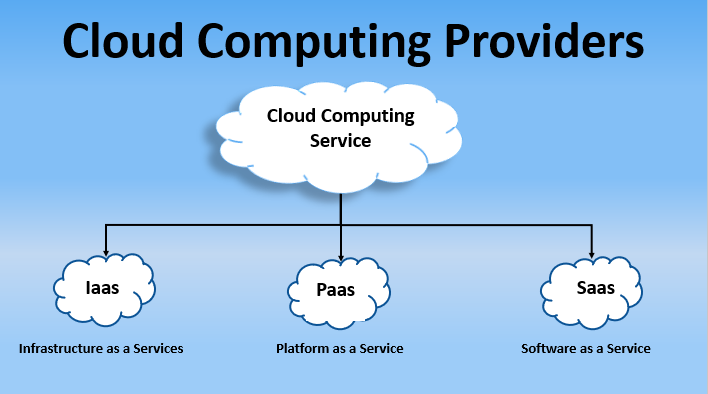Unlocking Success with LinkDaddy Cloud Services: Making Best Use Of Universal Cloud Service Impact
Unlocking Success with LinkDaddy Cloud Services: Making Best Use Of Universal Cloud Service Impact
Blog Article
Simplify Your Framework With Cloud Services
As services browse the ever-evolving landscape of modern technology and data management, the duty of cloud services in streamlining infrastructure has become increasingly famous. Just how can organizations properly navigate this transition and genuinely unlock the possibility of cloud solutions for streamlining their infrastructure?
Benefits of Cloud Services
Cloud services offer a streamlined strategy to handling IT facilities, providing services with versatility, scalability, and cost-efficiency. One of the essential benefits of cloud solutions is the scalability they offer. Businesses can easily scale their resources up or down based on need, guaranteeing they just spend for what they utilize. This flexibility is especially useful for companies with varying needs or those experiencing growth.
Furthermore, cloud solutions get rid of the requirement for organizations to purchase costly software and hardware. This cost-efficiency is a considerable benefit, particularly for small to medium-sized enterprises aiming to lessen ahead of time prices. By using cloud services, organizations can access top quality IT sources without the significant price related to traditional facilities arrangements.
Moreover, cloud solutions provide businesses with the flexibility to access their data and applications from anywhere with a net link. This degree of accessibility boosts collaboration among groups, allows remote job, and raises total productivity. The versatility provided by cloud services encourages businesses to adapt quickly to transforming market conditions and customer needs.
Expense Financial Savings and Scalability
In addition to the operational benefits highlighted earlier, the assimilation of cloud solutions right into a business's facilities brings forth significant expense savings and enhanced scalability. Cloud solutions provide a pay-as-you-go model, enabling organizations to range resources up or down based upon present needs, consequently staying clear of the prices connected with maintaining excess ability. This versatility allows firms to adapt rapidly to varying needs without incurring unnecessary expenditures.
Additionally, cloud services eliminate the need for in advance investments in software and hardware, minimizing capital investment. Overhead are additionally reduced as firms no more need to take care of and maintain physical servers, resulting in reduced power consumption and IT staffing costs. In addition, cloud solutions offer automatic updates and upkeep, making certain that the facilities continues to be safe and secure and current without requiring hands-on treatments.
Enhanced Safety Procedures
Executing rigorous security procedures is critical when incorporating cloud solutions right into a business's framework to make sure and secure delicate data conformity with sector laws. Cloud solution providers offer boosted security features such as information file encryption, firewall software security, and multi-factor authentication to mitigate cybersecurity threats. File encryption helps protect information both at rest and in transportation, making sure that only accredited individuals can access delicate info. Firewall programs act as an obstacle between internal networks and external risks, monitoring and regulating inbound and outward bound Recommended Reading network web traffic. Multi-factor authentication includes an extra layer of protection by requiring individuals to provide several read this article types of verification prior to accessing the cloud solutions.
Additionally, routine safety audits and conformity analyses assist make sure and recognize vulnerabilities adherence to market requirements. Business can likewise profit from attributes like computerized security updates and real-time risk surveillance given by cloud solution providers. By prioritizing safety and security measures and staying aggressive in resolving possible dangers, businesses can confidently leverage cloud solutions while protecting their useful data from unauthorized accessibility or breaches.
Transitioning to Cloud Infrastructure
To successfully incorporate cloud solutions into a business's infrastructure, an organized strategy that deals with the shift in the direction of cloud-based services is vital. Transitioning to cloud framework includes cautious planning and implementation to guarantee a smooth migration procedure. The primary step is to analyze the present framework and figure out which applications and systems appropriate for movement to the cloud. This examination ought to take into consideration variables such as information sensitivity, compliance demands, and performance demands.
Once the evaluation is total, a migration method ought to be developed. This approach should describe the timeline, sources, and obligations for moving each element to the click over here cloud. It is important to communicate this plan clearly to all stakeholders to make sure placement and lessen interruptions throughout the shift.
During the migration tracking, screening and procedure are crucial to determine and resolve any kind of concerns immediately. Normal checkpoints ought to be developed to track development and make required changes. Furthermore, training for employees on utilizing cloud solutions should be offered to make sure an effective shift and take full advantage of the benefits of the new infrastructure.
Ideal Practices for Cloud Adoption
Successful fostering of cloud solutions depends upon the strategic alignment of business purposes with technological abilities and organizational readiness. To make certain a smooth transition to the cloud, organizations need to begin by conducting a detailed analysis of their current framework and determining which work are best matched for cloud migration. It is essential to include crucial stakeholders from different divisions in the decision-making procedure to acquire buy-in and deal with any kind of issues beforehand.
An additional best technique for cloud adoption is to prioritize protection and compliance. Organizations must very carefully assess the protection steps provided by cloud solution carriers and ensure that their data is shielded according to industry requirements and governing requirements. Carrying out durable data file encryption, access controls, and routine security audits can aid minimize risks related to cloud fostering.

Conclusion

As services navigate the ever-evolving landscape of innovation and data administration, the role of cloud solutions in simplifying framework has become increasingly prominent - linkdaddy cloud services. How can businesses properly navigate this change and truly open the potential of cloud solutions for simplifying their facilities?
Cloud services provide a streamlined approach to managing IT framework, providing companies with scalability, adaptability, and cost-efficiency. By utilizing cloud services, organizations can access top quality IT sources without the large cost tag associated with traditional infrastructure configurations.
To ensure a smooth shift to the cloud, companies must start by carrying out a thorough analysis of their current facilities and recognizing which work are best suited for cloud migration.
Report this page